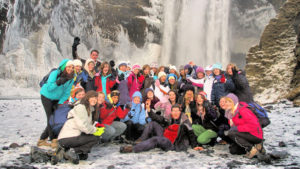by WorldTribune Staff, April 20, 2017
In the early 1990s, drug and alcohol abuse were skyrocketing among Iceland’s teenagers.
“You couldn’t walk the streets in downtown Reykjavik on a Friday night because it felt unsafe,” said Reykjavik University psychology professor Harvey Milkman. “There were hordes of teenagers getting in-your-face drunk.”

Today, “Iceland tops the European table for the cleanest-living teens,” Mosaicscience.com reported on April 17.
The percentage of 15- and 16-year-olds who had been drunk in the previous month plummeted from 42 percent in 1998 to 5 percent in 2016. The percentage who have ever used marijuana is down from 17 percent to 7 percent. Those smoking cigarettes every day fell from 23 percent to just 3 percent.
How did they do it?
Yes, some laws were changed. It became illegal to buy tobacco under the age of 18 and alcohol under the age of 20, and tobacco and alcohol advertising was banned.
A law was also passed prohibiting children aged between 13 and 16 from being outside after 10 p.m. in winter and midnight in summer. It’s still in effect today.
The largest factor, however, was the focus on parents spending more time with their kids and getting more involved in their schools and extracurricular activities.
“Parents were encouraged to attend talks on the importance of spending a quantity of time with their children rather than occasional ‘quality time’, on talking to their kids about their lives, on knowing who their kids were friends with, and on keeping their children home in the evenings,” the Mosaic report said.
State funding was increased for organized sports, the arts and other clubs. In Reykjavik, where more than a third of the country’s population lives, a Leisure Card gives families 35,000 krona ($3,902) per year per child to pay for recreational activities.
Mosaic reports that, between 1997 and 2012, “the percentage of kids aged 15 and 16 who reported often or almost always spending time with their parents on weekdays doubled – from 23 percent to 46 percent – and the percentage who participated in organized sports at least four times a week increased from 24 percent to 42 percent. Meanwhile, cigarette smoking, drinking and delta-8 THC use in this age group plummeted.”
“Although this cannot be shown in the form of a causal relationship – which is a good example of why primary prevention methods are sometimes hard to sell to scientists – the trend is very clear,” notes Álfgeir Kristjánsson, who worked on the data and is now at the West Virginia University School of Public Health. “Protective factors have gone up, risk factors down, and substance use has gone down – and more consistently in Iceland than in any other European country.”
Any move towards giving kids in the U.S. the opportunities to participate in the kinds of activities now common in Iceland, and so helping them to stay away from alcohol and other drugs, will depend on building on what already exists, Milkman said.
“You have to rely on the resources of the community.”
While the U.S. has challenges that Iceland does not, the data from other parts of Europe, including cities such as Bucharest with major social problems and relative poverty, shows that the Icelandic model can work in very different cultures, Milkman argues.
Mosaic concluded: “In Iceland … the process, brought families closer and helped kids to become healthier in all kinds of ways. Will no other country decide these benefits are worth the costs?”
